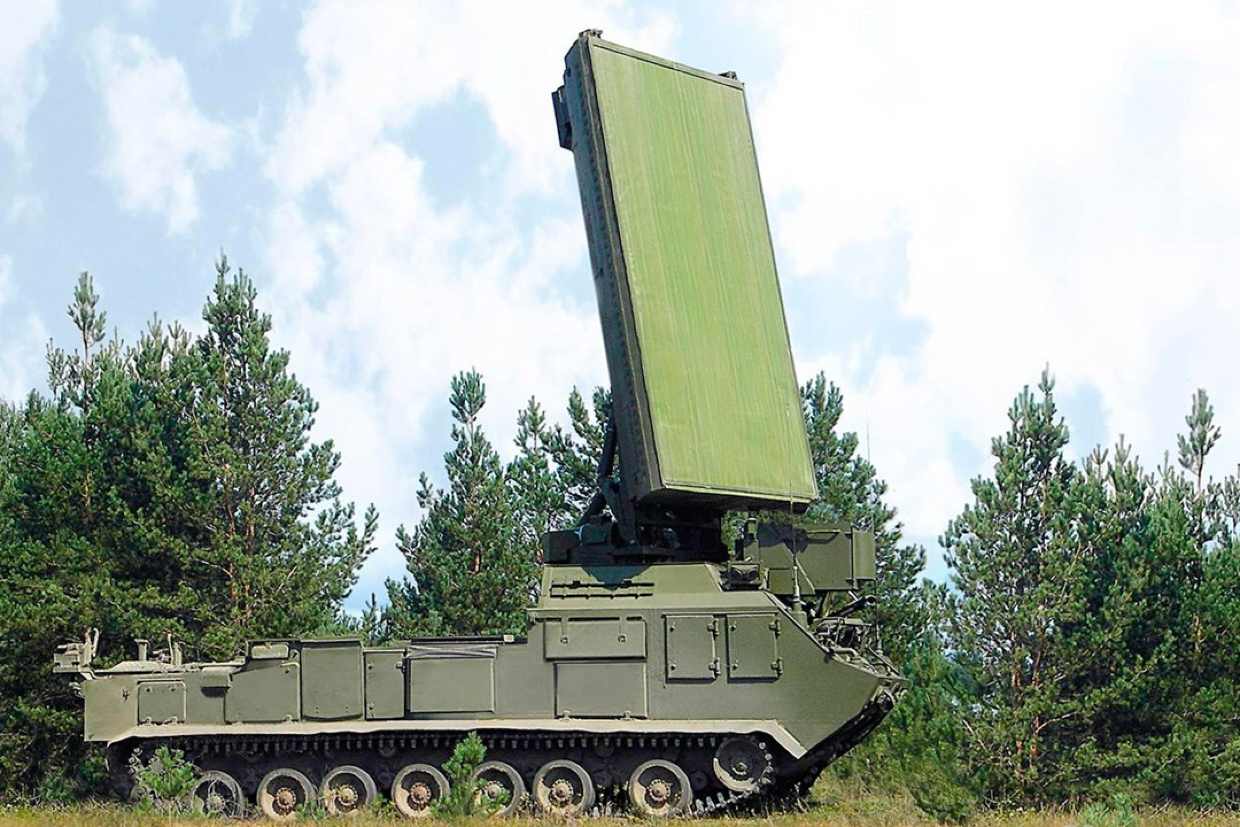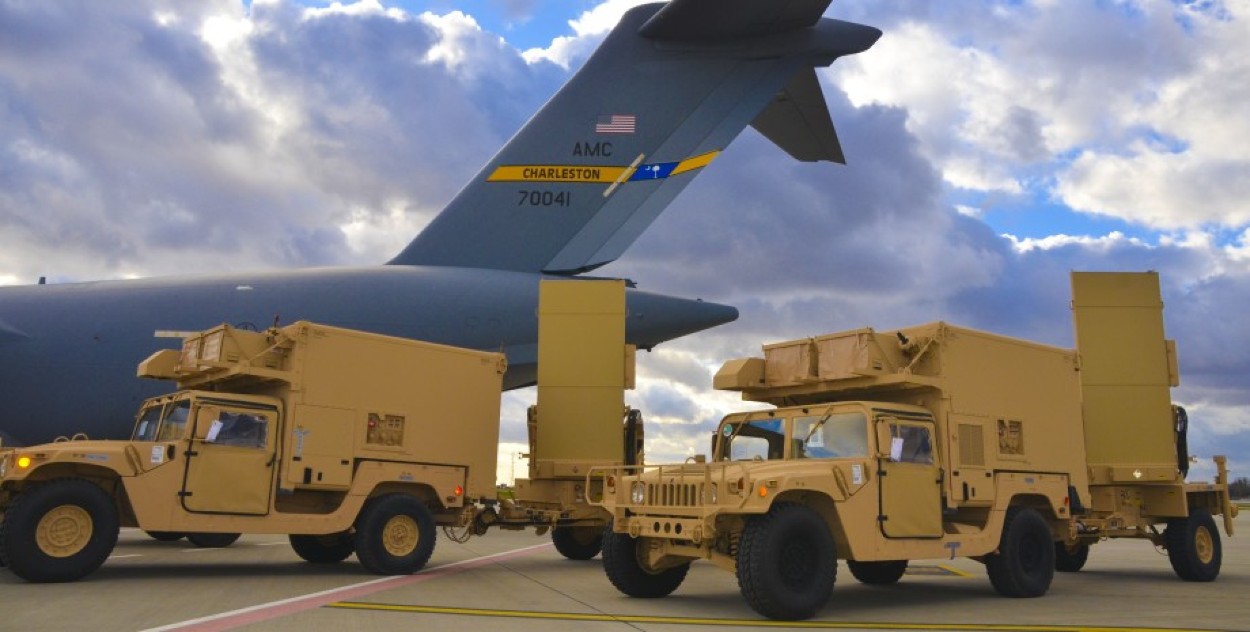The Russian military seems to have lost several hard-to-replace counter-battery radar systems that have been instrumental in locating and destroying Ukrainian artillery units, according to a recent intelligence assessment by the UK Ministry of Defense (UK MoD).
On March 23, Ukrainian special operations forces released a video showing a Russian Zoopark-1M counter-battery radar being destroyed in eastern Ukraine’s Donetsk region.
The UK MoD said that efforts by both the Ukrainian and Russian forces to neutralize their opponents’ radars had been a constant element of the conflict. It noted that these systems are relatively few in number but are a significant force multiplier, as they allow battlefield commanders to locate and strike enemy artillery rapidly.
Counter-battery radars detect and track incoming projectiles and, based on their trajectories, calculate their point of origin, so if the rockets can alter their courses in such a way as to confuse the counter-battery radars, then it is indeed possible to prevent precise retaliatory strikes.
However, it is not just the trajectory of rockets but also the sound generated when rockets are launched that the counter-battery systems use to determine the location of enemy launchers.
#Ukraine: A valuable and potent Russian 1L261 radar vehicle of the 1L260 Zoopark-1M counter-battery radar complex was damaged by the Ukrainian Army in #Donetsk Oblast.
The radar was located by Ukrainian SSO using the new Shark reconnaissance UAV. pic.twitter.com/vEbzxBRaPo
— ?? Ukraine Weapons Tracker (@UAWeapons) March 23, 2023
“Russia has lost at least six Zoopark-1M and likely only has a limited number left in Ukraine. Regenerating counter-battery radar fleets is likely a priority for both sides, but Russia will likely struggle because the systems rely on supplies of high-tech electronics disrupted by sanctions,” the UK MoD stated in its intelligence update.
However, according to the openly available information compiled by Oryx military tracking blog, Russia seems to have lost only around seven Zoopark-1M radars, of which three have been destroyed, two have been captured, and two have been damaged.
By November, the Russian military had lost around five of these counter-battery radar systems. Therefore, a figure of seven is not much of an increase in the number of systems destroyed in Ukraine.
Zoopark-1M Radar
Developed by Tula Strela enterprise, the Zoopark-1M is equipped with a passive electronically scanned array radar. It is designed to detect and locate enemy artillery and missile systems effectively. The radar can also be used to adjust the fire of friendly artillery.
The Zoopark-1M has a detection range of up to 40 kilometers, as per the claims made in Russian reports. It can determine potential launch positions of hostile artilleries up to 15 kilometers.
A single Zoopark-1M can reportedly determine the coordinates of up to 60 batteries per minute.

Interestingly, Ukraine was also supplied with Zoopark-1Ms, and Ukrainian engineers are expected to know the system’s vulnerabilities already, which they are believed to have shared with the NATO countries.
According to an Israeli media outlet, the main target for Ukrainian fighter pilots to destroy using their US-supplied AGM-88 HARM (High-speed anti-radiation missiles) is the Zoopark-1M counter-battery radars and not the Russian air defense radars.
Apart from the Zoopark-1M, Russian forces are also using the IL271 Aistenok Ku-band radars, capable of determining mortar-firing positions at ranges of 750 meters, according to experts.
#Ukraine: A Russian 1L271 portable mortar locating reconnaissance radar was captured by the Ukrainian army in Rubtsi, #Donestk Oblast along with two dozen OF-843B 120mm HE mortar bombs. pic.twitter.com/p8plY3q7xD
— ?? Ukraine Weapons Tracker (@UAWeapons) September 27, 2022
Ukrainian forces captured a single IL271 Aistenok in Donetsk Oblast in September 2022.
Counter-Battery Radars Used By Ukraine
On the other hand, the Ukrainian forces have been primarily relying on the US-made AN/TPQ-36 counter-battery radars for their artillery duels against the Russian forces.
Manufactured by Northrop Grumman and developed by Hughes Aircraft Co. in the mid-late 1970s, the X-band AN/TPQ-36 Firefinder is a highly mobile short-range counter-battery radar with a detection range of up to 24 kilometers.

The radar can be connected to M777s and linked to High Mobility Artillery Rocket Systems (HIMARS), both of which the US has sent in sufficient numbers to Kyiv.
Going by the figures compiled by Oryx military tracking blog, only one AN/TPQ-36 has been damaged so far. The radar in question was struck in March 2022.
However, in November 2022, Twitter handles sympathetic to Russia shared a video of what is purportedly AN/TPQ-36 being destroyed by Russian artillery fire. The video was reportedly filmed in the Zaporizhzhia direction.
1367/ Allegedly the #AFU AN/TPQ-36 radar in the #Zaporizhia direction got hit. #Donbass pic.twitter.com/ZyW6fkpQ4V
— Huligan (@Ghost132607472) November 9, 2022
Apart from that, the Russian Ministry of Defense, on multiple occasions, has also claimed to have destroyed the US-made L-band AN/TPQ-50, but there is no evidence, so far, of this radar either being supplied to or used by Ukraine.
The AN/TPQ-50 has a detection range of up to 10 kilometers, and the US is believed to have sent a single AN/TPQ-50 to Ukraine in 2015 for testing purposes, but there is no evidence that supplies of this radar then followed.
Experts suggest that the US decided to take advantage of the Russian aggression in Ukraine in 2014 to evaluate the performance of the AN/TPQ-50 in detecting Russian artillery.
Besides the US-made Firefinder radars, Ukrainian forces are also using the German-made Hensoldt Cobra-C band counter-battery radars that can detect and track around 1,500 targets in a radius of up to 250 kilometers.
- Contact the author at tanmaykadam700@gmail.com
- Follow EurAsian Times on Google News




